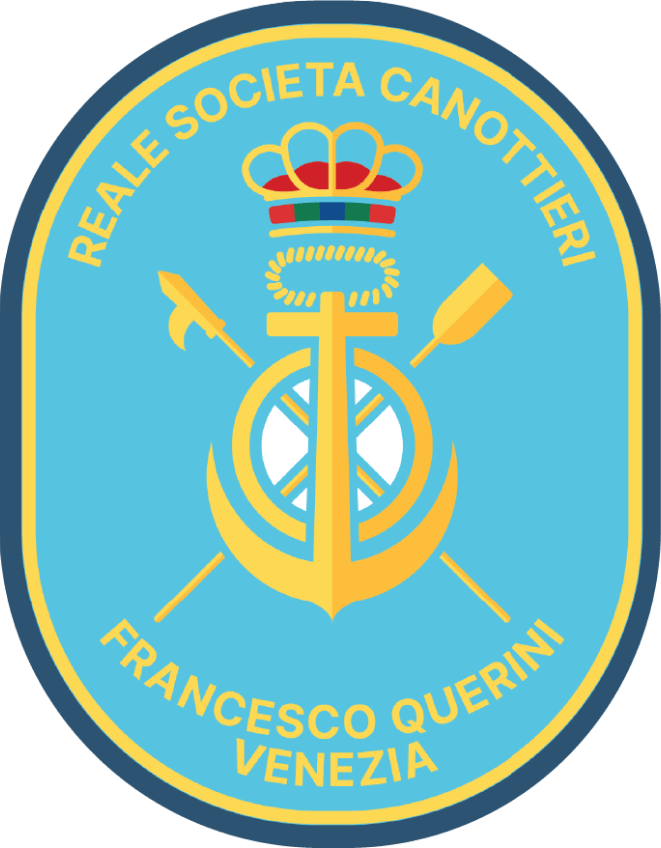Our
Partner




The Cao Rio project supports the Reale Società Canottieri Querini, a historical rowing club founded in 1901.
Throughout the Cao Rio activities, everyone can support the sporting traditions of Venice. We donate part of the fee to one of the oldest rowing clubs in the city, the Reale Società Canottieri Querini. It goes to maintain the Society in various ways, including the restoration of traditional boats.
Thanks to our partner, we boast a unique chance to start our activities at the Society's boatyard, so that you can immerse yourself into the culture of Venetian rowing.

History
of the club
The name «FRANCESCO QUERINI» was unanimously given to the Society to commemorate the young Venetian officer of the Royal Navy who had been missing in the Arctic Ocean during an attempt to conquer the North Pole.
On 16 May 1901, the Società di Sport Nautici Francesco Querini, or the Querini as it is better known in Italy and abroad, was born.
On the evening of 16 May, gathered in a room of the Bauer Restaurant by Piero Foscari, a few young people, mostly members who had left the Canottieri Bucintoro, christened the new association.
The club felt strong enough to represent Querini’s name under Italian colors internationally, an accomplishment that had never been seen before by Venetian crews. The Querini achieved its first great sporting victory in Venetian rowing at the Italian Championships in Turin.
The King and Queen of Italy welcomed the Querini under their high patronage and donated their portraits to the Society with a signed dedication; the Society still owns to this day.
The first statute was approved and the first disdotona, the Society's representative gondola with 18 rowers (disdòto in Venetian dialect means eighteen), was launched on St. Mark's Day. Designed and built by engineer Angelo Meloncini in his shipyard, the beautiful, technically daring, one-of-a-kind vessel, admired by all, would excel for a century (and still does) in all the most important water events in the city and abroad.
Rights reserved Reale Società Canottieri Querini (photo)
16 May 1901
1902
1903
The Querini was confirmed with the Patronage of HM the King and the Queen, as well as the title of «Royal» which, recently restored, is still part of the Society’s name
Rights reserved Reale Società Canottieri Querini (photo)
1903
24 April 1926
The Society commemorated its first 25 years of history. On that day, the second Disdotona was launched, built according to the designs of the first, by the Carraro shipyard, and named after the recently deceased Society’s first president, Piero Foscari. She is a faithful reproduction of the first vessel: her length spans 25 meters.
The Association moved its headquarters to the Fondamente Nuove, where it has been located to the present day.
The Ministry of the Navy authorized the Querini to fly the Navy flag on its boats in place of the Merchant Navy flag
The Querini's sporting soul was twofold: rowing was the main activity, but rowing alla veneta was also a continuous source of great satisfaction in the national field.
16 May 1926
1929
1933
Rights reserved Reale Società Canottieri Querini (photo)
As early as 1950, it resumed winning at national and international races.
The post-war period was marked by a period of scarce resources for the club, which tried to reconsolidate, especially the social structure that had been dispersed by the war.
Rights reserved Reale Società Canottieri Querini (photo)
On the proposal of the F.I.C., the National Council of the C.O.N.I. awarded the Querini Flag with the Golden Star for Sporting Merit citing the following significant motivation: «One of the oldest and most meritorious Associations, the Canottieri Querini boasts a glorious rowing activity, aimed at igniting in the young people a passion for sports and honoring the national sport. Always and everywhere present with its boats at the most important rowing events, it has won a series of great successes».
7 May 1969
Under the presidency of Dino Sesani, which began in 1972, the Querini returned to its former glory. This coincided with the revival of the city's rowing sport, which followed the successful and intelligent initiative of the Vogalonga. During this period, the club's membership reaches almost a thousand members.
The third disdotona was launched. Built by Giovanni Giuponi, unlike the others that had preceded it, this one was built in three dismountable pieces. It is the current one that has never missed a single Vogalonga or any of the Venetian water events.
The rowing school was reconstituted with the help of a professional coach with a firm character, Nazareno Simonato, who was followed in the succeeding years by Arianna Gambirasi and Francesca Brotto, and more recently by Sandro Antenori, Primo Baran and Vittorio Liberti.
9 September 1973
12 members on three four-oared sandoli (a traditional, flat-bottomed Venetian rowing boat designed for the generally shallow waters of the Venetian Lagoon) completed the Venice-Turin.
The Locarno-Venice raid in an eight, finished in just six days. In the eighties, the Querini completed a round trip around Lake Geneva five times (three in a four-man veneta, one in a six-man veneta and one in a yole).
The Querini went abroad: ten men in a gondola down the Danube, or a raid of the three capitals (Vienna-Budapest-Belgrade).
1977
1978
1979
Michele Populin initiated the canoeing section, consolidated in the 1980s by Claudio De Zanchi, followed by Pier Paolo Perutto, Luca Tenderini and Piero Negrin. After rowing and Venetian rowing, the third sporting soul of the club came to life.
The results are coming in: some twenty Italian Rowing Championships are in fact added to the many that have been achieved since the club's early years. A.Mazzuccato, D.Polo, M.Muraro and D.Zane, R.Memo, M.Maggiolo, L.Corò, F.Palma, C.Bonaldo, A.Gottipavero, B.Simionato, V.Battagliarin, F.Brotto, F.Perego and N.Sancitale, F.Vianello and L.Testori — these are the names of the victorious athletes. In particular, in 1980 Mazzuccato and Polo took part in the Junior World Championships in Antwerp and in the four without at the Junior World Championships in Piediluco.
1980s
From Venice to Umag in Istria an eighth covered 93 km in the open sea in just over eight hours.
A group of ten members sailed down the Thames from Oxford to London on Venetian boats provided on site by members of the «City Barge», an English Venetian rowing club the Querini is twinned with.
Rights reserved Reale Società Canottieri Querini (photo)
2 August 1988
1999
The Querini also has to its credit a long series of raids both in Italy and abroad.
The first, along the Istrian coast, was carried out in 1903, followed by the Venice-Turin-Venice raid in 1927, carried out in a Venetian two-man boat. The following year saw again a 550-kilometre raid along the Bacchiglione, Adige and Mincio rivers to Lake Garda, then the Venice-Trieste crossing, in a Venetian two-man boat. The Venice-Rome raid ended tragically with the death of one of the two rowers.
In the presence of the high-pofile city authorities, the first 100 years of Querini's history were solemnly celebrated.
After three days of sailing in inland waters and crossing the gulf in adverse weather conditions, a disdotona landed at Molo Audace in Trieste, where it was triumphantly welcomed by the mayor of Trieste.
Two Venetian fours, escorted by the disdotona, performed a demonstration regatta in front of the public at the Royal Henley Regatta. During the seven-day descent down the Thames from Henley to London, forty-four members took turns at the oars.
2004
2001
2003




